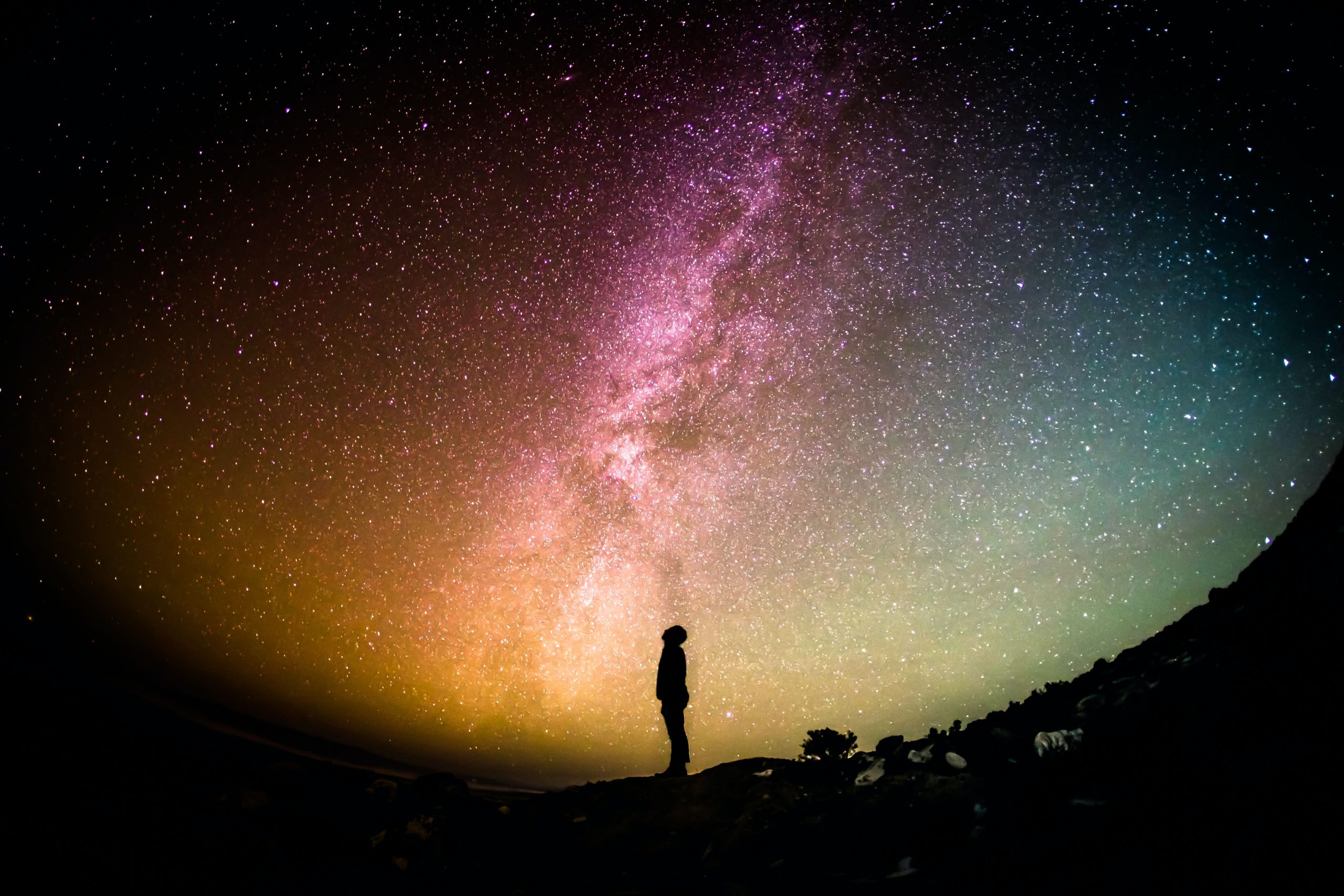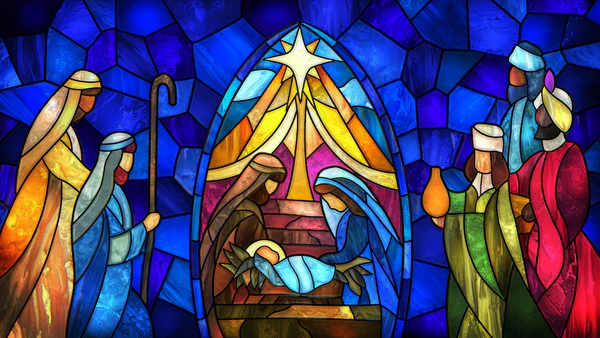I’m not sure if it is the same for other Christians who were raised within the Church, but I have found it interesting that some of the most complicated, confusing and heated discussions within American Christianity focus on the “bookends” of salvation history. I suspect that for many, young and mature, few conversations seem more anxiety-inducing and befuddling than how we are to understand what the Bible teaches regarding the beginning of our universe and God’s ultimate purpose for it.
As I have grown in my faith, deepened my study of Scripture and reflected upon these topics, I have begun to appreciate more and more how weighty, complex and detailed these conversations can be. Discussions about the doctrines of creation (the focus here) and eschatology (the study of the end times) can be rife with conflict and impassioned arguments. When we stop to reflect, it does make a kind of sense — these issues are not neutral or frivolous but involve foundational doctrines of the Christian faith, especially when it comes to creation. After all, the first line of the Apostles’ Creed confesses, “I believe in God the Father Almighty, Maker of heaven and earth.” The first sentence of Scripture declares, “In the beginning, God created the heavens and the earth” (Gen. 1:1).
From its inception with the Jerusalem Church after the Resurrection, Christians have acknowledged that the God who revealed Himself as the Lord to Abraham and his descendants is not only the “Author of Life,” but has revealed Himself as the Father, the Holy Spirit and the Son Who came to earth as Jesus Christ of Nazareth (Acts 2:14–39, 3:1–16).
Finding unity
However, devoted followers of Jesus throughout history have disagreed on how and when God made the universe along with everything and everyone it contains. I remember when I could not believe committed Christians might believe that Darwinian evolution existed, much less that God might use it as the primary mechanism through which was accomplished the biologically diverse plant, animal and microbial life we observe.
But now, I personally know a significant number of Christians who believe God may have used some evolutionary mechanisms in His providential creative process. And I know of several scholars and movements that seek to incorporate the latest scientific discoveries and models into their understanding of Genesis in a way that inspires authentic wonder and heartfelt worship of God’s wisdom and power. I have no reason to doubt the sincerity of their discipleship, their love of the Lord or His Word, or the genuine activity of the Holy Spirit within them — so how do we, as Christians, find unity in the midst of these topics?
- We should seek to understand what fellow Christians believe and why they hold different convictions
- We must understand why we believe what we do, and examine the presuppositions, values and interpretations that lead us to our own conclusions.
- We must humbly be open to correction and conversation, and know that disagreement does not always produce disunity or disqualify someone spiritually.
- We should not avoid this kind of study, reflection and discussion on issues to which there is significant spiritual benefit, for as we wrestle with God’s truth, we grow in our understanding of what these doctrines mean, how they bulwark our faith and deepen our convictions.
My hope and prayer are that we, as Christians, find a starting point and awareness of the complexity and diversity of what Christians have, do and can believe regarding the creation of the universe, including the strengths of those views, their challenges and from whence they might come.
The Weighty and Complex Nature of the Conversation
First, we should briefly discuss why these matters might be particularly sensitive, confounding and complicated. The doctrine of creation — that the eternal God has, through His power and will, created everything that has, continues to and will exist in the universe — is a foundational confession of orthodox Christianity.
Our knowledge of God in Scripture and experience begins with knowing Him as Creator. As Paul says, “His invisible attributes, namely, His eternal power and divine nature, have been clearly perceived, ever since the creation of the world, in the things that have been made” (Rom. 1:20). Medieval theologian Thomas Aquinas’ ontological arguments for God’s existence often drew a line from finite, temporary creations to the imagination and power of the eternal Creator.
Because we are dealing with a central tenet of the historical Christian faith, these conversations will naturally carry a kind of heaviness and emotional investment.
Debates often touch on or involve other deep, sensitive convictions that drastically shape what we believe. Chief among them is what we believe about the Bible and how we relate to it. Diverse positions on many doctrines, but creation especially, are held by committed followers of Jesus who agree with 2 Timothy 3:16–17 and adhere to the following beliefs about the Old and New Testaments:
- Scripture is inspired — God imparted His true and intended Word through human authors through the Holy Spirit.
- In its original manuscripts, the books of the Bible are inerrant — they are free from error in what they intend to communicate.
- Scripture is historical — the Old and New Testaments provide a reliable account of God’s interaction with His people in real time and space.
- The Bible, as the Word of God, is authoritative — it demands a faithful response as God’s instruction in how we live in a relationship with Him, each other and our world.
But even if we have that common, foundational understanding, how do we rightly and faithfully interpret Scripture? The things we believe are required or helpful to shed light on a particular passage will significantly impact our conclusions. Consider the following:
- How literally should we read certain passages of Scripture?
- What role do symbolism, structure, genre and poetic imagery play in our interpretation?
- What did the biblical authors intend for their audience to take away?
- How much does the background of the author and audience impact the language, arguments and images?
Pursuit of Truth
Answering those questions reveals how we think about a variety of issues. Take the question of the context in which a book of the Bible is written — if we try to bridge the cultural, historical and anthropological gap between the authors and ourselves, what role should academic disciplines like history, archaeology, paleontology, anthropology, linguistics and science have in our interpretive process? Which research methods and approaches might we accept or even redeem in our pursuit of God’s Truth? To what extent should we trust “experts,” and how much authority do we entrust to research and scientific study?
These questions become even more pointed when we begin to focus on creation, for the general beliefs we hold about how God made everything impact how we might answer other questions of origins:
- How old is the earth?
- How old is the universe?
- How long have humans been around?
- When did the flood of Genesis 6–8 occur?
- How far did it reach?
- What mechanisms did God use to bring the physical world and organic life into existence?
These and more present themselves as we try to understand the facets of God’s creative activity.
Time, clarity and brevity prevent exploring each related topic in extensive detail; however, we can find some large landmarks to help us get our bearings as we begin to navigate the paths that make the most sense to each of us. In that light, we will try to chart the landscape of diverse convictions within orthodox Christianity of how God created the world, focusing on three major views.
What Does the Bible Say?
As Christians, we must begin where the Bible begins. Cover to cover, the Bible declares repeatedly that God — Whom we know in the persons of the Father, Son and Holy Spirit — is the ultimate origin of our universe and its inhabitants. This incredible truth inspires both praise (Ps. 19:1–6; 104; 139:14; Rev. 4:8–11) and humility (Job 38:1–42:1–6), underscores ethical principles (Ex. 20:8–11; Gen. 9:1–7; James 3:7–12) and reveals the power (John 1:1–3; Heb. 1:3; Col. 1:15–17) and nature (Ps. 8; 104:10–32; Matt. 6:26–30; Acts 17:24–28) of the Lord.
However, much of the debate revolves around interpretation of the creation accounts in Genesis 1–2, so we will focus most of our attention there.
As previously noted, Genesis begins with a statement that is either a summary or a record of an initial creative act when it says, “In the beginning, God created the heavens and the earth” (Gen. 1:1). The passage continues, describing an initial state of “the earth” as disordered and empty, or in the words of Robert Atler, “welter and waste” (v. 2a). While the scene seems bleak, it is pregnant with possibility, for “the Spirit of God” hovers above the chaotic waters (v. 2b) in anticipation of the six creative acts, described as “days,” that follow. Within these creative decrees in Genesis 1:3–31, God manifests order, beauty, abundance, life and authority within the universe He has created. And at the conclusion of each of the six days, the author repeats the refrain, “… and there was evening and there was morning … .”
On the first day, God decrees, “Let there be light,” and without strife, opposition or futility, creation responds: “There was light,” producing a disparity between light and darkness, day and night (vv. 3–4). God declares all this work to be “good” — not necessarily morally, but at least in that the light is appropriate and brings about, sustains, benefits or enhances life.
On the second day, God creates a second separation, forming a vertical “expanse” between the primordial waters covering the surface of the earth (v. 6). This separation, “the heavens” or “sky,” divides the waters “above” from those “below” (vv. 7–8).
On the third day, God confines the waters below the heavens to allow dry land to appear, creating another distinction between the “land” and the “seas” (vv. 9–10). Then He causes the earth to sprout vegetation of all kinds, including trees and plants that can reproduce through fruiting and fertilization (vv. 11–13).
On the fourth day (vv. 14–19), God declares the expanse of the heavens to be filled with lights “to distinguish between the day and the night, and … mark the seasons and days and years. And … to shine upon the earth.” After they are manifested, God appoints a “greater” light, the sun, to govern the day, and a lesser light, the moon, to govern the night along with the stars. As before, He declares all to be “good” and continues on to the fifth day.
From this point, He brings forth animals to live in “the waters below” and in the “expanse of the sky” (v. 20). This includes not only the small fish, but “the great sea creatures” and “every living thing that moves” within the waters “according to their kinds,” and He does the same for every bird and flying animal (v. 21). But now God does something new, for He blesses these creatures of sea and sky to “be fruitful and multiply,” filling their respective domains (vv. 22–23).
‘In His image’
Finally, on the sixth day, God once again turns His attention to the dry land, bringing forth all those creatures whose life is confined to the ground, whether “livestock, creeping things and beasts of the earth” (vv. 24–25). As before, God sees that all this is good — but He is not finished.
He turns His attention to that special creation that will crown all He has made, that will cause Him to see everything together as “very good” (v. 31). That creation is humanity, made uniquely in the “image” and after the “likeness” of God to “have dominion” over all the other living things on the Earth (v. 26). He makes both man and woman to work together to increasingly reflect His image through the earth, not only as a special testimony of His creative work and relational nature through childbearing, but also as His special representatives and authoritative agents in the world (vv. 27–28).
To further demonstrate His care and attention, God reveals He has provided the means to sustain them and the animals through what He has provided (v. 29). The sixth day closes, and we see that the symphony is complete, in all its complexity and complementarity.
And in response, God deems it appropriate and good to “cease” on the seventh day from all His creative activity, taking a rest within His creation to commune and fellowship with it (Gen. 2:1–3).
Following this account, the rest of Genesis 2 zooms in on an intentional and personal (note the use of the Covenant name YHWH, “the LORD,” in verse 4) picture of God’s special creation of man and woman for one another. The scene closes with the man and woman thriving in a God-given abode where they enjoy surpassing abundance in the immediate presence of God in the garden “east of Eden” (vv. 8–25).
‘From nothing’
Some things to note: First, there is an origin to the universe and creation, found in God’s creative initiative. The Bible declares the only eternal thing is God Himself, Who brings the universe and all life into existence through His power and according to His will.
God created the world ex nihilo — from nothing. Here are just a few of the implications of that:
- It shows God is not dependent on anything outside of Himself. He is completely self-sufficient in everything.
- It emphasizes that God is totally in control over all He has made.
- Finally, since God didn’t fashion creation out of anything that existed before Him, it shows us that all of creation is dependent upon God for its existence.
Second, the Bible has little to say about the mechanisms God used to create the world. There are several verbs to describe God’s creative activity: “make” (Gen. 1:7, 25–26, 31); “fashion” as a potter or craftsman (Gen. 2:7); and “create,” a Hebrew verb used only to describe the kind of making God can do, referring to the completed object rather than the process or material from which it was made (Gen. 1:1, 21, 25, 27; 2:3). The text does not provide a more detailed picture about how God creates; rather, the predominant text says He creates by decree. He speaks, and it comes to pass.
Third, in the plain text of Genesis, the seventh day never ends. This detail may seem insignificant, and it does not preclude a literal seventh morning and evening, but many commentators and theologians have posited that this should cause us to wonder about what the author is trying to communicate. They suggest the focus should be on God’s communion with His creation and the pattern for Israel’s weekly Sabbath.
Finally, the author of Genesis was not there when God accomplished His work. Conservative biblical scholars (in both Christianity and Judaism) believe Moses had a direct hand in the authorship of the Torah or Pentateuch — the first five books of both the Christian Old Testament and Jewish scriptures (Genesis, Exodus, Leviticus, Numbers and Deuteronomy). If true (which, full disclosure, I believe it is), Moses records these events after the fact.
Surely he was at least recording a well-preserved oral tradition passed down from Adam to Noah to Abraham to Israel. I expect most of us probably believe he also received some special revelation through his deep, personal communion with God. However, it is not explicit if this revelation included a vision of the world’s origins, word-for-word accounts of creation through the Creator’s perspective or if God awakened Moses to a deeper meaning and how His character and intentions for Israel were revealed through creation.
All of these are possible, but the only thing we know with complete certainty is that no human was present to observe anything mentioned before Genesis 1:26.
Diverse thought
It is precisely in these features and ambiguities of the creation account that we see such rich, intentional and diverse thought within Christianity regarding the mechanisms through which God brought our universe, and us, into existence.
So what are those views? To paint with a broad brush, there are three predominant categories: Young Earth Creationism, Old Earth Creationism and Theistic Evolution (also called Evolutionary Creationism). But a continuum of thoughts and convictions falls between or even beyond these labels. As a starting point, I will give you brief descriptions of these three perspectives.
Young Earth Creationism is the belief that the universe is fewer than 10,000 years old, and that God created it, the earth and all life within a literal seven-day week. Proponents of YEC typically argue (rightly so) that God is sovereign and powerful and can act in any way He chooses.
They also typically argue that scientific inquiry related to the creation of the world should be open to explanations that involve divine intervention as a possible cause for things we observe in the natural world.
Old Earth Creationism tends to appreciate the scientific insights — including geology, astronomy and paleontology — regarding the age of the earth. These studies suggest the earth could be up to 4.5 billion years old and the universe some 14 billion years old.
Proponents of OEC typically hold to some form of progressive Creationism — that God created the universe through processes involving direct, divine intervention to accomplish the diversity and complexity we observe in the world.
Theistic Evolution is similar to Old Earth Creationism in many ways. Like OEC, TE also holds the view that the earth and universe are billions of years old. But they are very different in some respects as well.
Generally speaking, TE finds the scientific evidence for macroevolution compelling, and therefore accepts it as a mechanism (even the primary one) God used to create organic life in all its forms — microbial, plant, animal and human. Find more information on
Where do we go from here?
Where do we go from here? Clearly, this article and its companions has not and cannot adequately represent the diversity of views on these subjects. The nuances are intricate and detailed, and it can take a full reading and cursory understanding of some scientific methods to understand all the possible detours. However, I hope this discussion has provided a meaningful starting place for reflection, and fairly represented some of the broader positions on creation within orthodox Christianity.
At the end of this discussion you may find yourself somewhat frustrated, with a lack of clarity on what you believe, and you may have many more questions than when we began. I admit, that is exactly where I tend to fall on these subjects, with a greater awareness of the challenges of each view and a hesitancy to go all-in on one. But I find great comfort in many things that are true no matter where we might land.
First, there is ample room within Christianity for each perspective. The ambiguities within the text and diverse scholarship from committed followers of Jesus (past and present) should grant each of us freedom as we try to understand what we believe on the whens and hows of creation.
Second, no matter the timing and mechanism, Christians everywhere confess that the universe and all its inhabitants point to our gracious and faithful Creator. His creation reveals His existence, power, magnificence, ingenuity and wisdom.
Thirdly, the creation narrative of Genesis 1–3 also reveals His character. He is a provider and home-maker par excellence. He creates homes and sustenance for the heavenly, aquatic, avian and terrestrial beings that inhabit every corner of creation. And along with the rest of Scripture, the creation account attests that He is intentionally invested in His creation, like an artist fashioning a masterpiece (Gen. 2:7).
‘Greater confidence in how God has revealed Himself’
He also is personal and relational. He creates humanity to have relationships with each other and Himself (Gen. 2:18, 23; 3:8), even pursuing us when we might seek to withdraw from Him (Gen. 3:8–9).
And He is gracious. Even when humanity steps outside His good design to the detriment of the entire created order (Gen. 3:17–19), His mercy meets them with hope for restoration — a promised Offspring of the man and woman who will overcome all the spiritual forces of evil (Gen. 3:15, 21). We know from the teaching of the apostles and the New Testament that seed came in the form of the Incarnate Son of God, Jesus of Nazareth, descendant of Adam and Abraham (Luke 3:23-38; John 1:1-5, 14). And because we can know Jesus, not only intellectually and historically, but spiritually and personally, we can know the fullness of God (John 1:18).
No matter where you land, if anywhere, on the age of the earth and the validity of evolutionary theory, as a Christian you can have even greater confidence in how God has revealed Himself in Jesus through the power and illumination of the Holy Spirit. And we can have unity with fellow believers who might hold ideas different than our own, for we are bound by more than beliefs and theories — we are united by our relationship with the Creator Himself, in hope of the day when death shall be no more and all questions will be answered or overwritten in an unmediated, uninterrupted and eternal experience of the Father, Son and Holy Spirit in a restored universe.
References and Recommended Reading:
- Atler, Robert. Genesis: Translation and Commentary. New York: W.W. Norton & Company, 1996.
Copan, Paul and Tremper Longman III, Christopher L. Reese and Michael G. Strauss, eds., Dictionary of Christianity and Science. Grand Rapids: Zondervan, 2017. - Gundry, Stanley N., J.P. Moreland and John Mark Reynolds, eds. Three Views on creation and Evolution. Grand Rapids: Zondervan, 1999.
- Keathley, Kenneth D. and Mark F. Rooker. 40 Questions About creation and Evolution. Grand Rapids: Kregel, 2014.
- Roser, Max, Esteban Ortiz-Ospina and Hannah Ritchie. “Life Expectancy,” Our World in Data, October 2019, https://ourworldindata.org/life-expectancy.
- Roser, Max, Cameron Appel and Hannah Ritchie. “Human Height,” Our World in Data, May 2019, https://ourworldindata.org/human-height.
- Van Till, Howard J. A Case for Theistic Evolution: A Zondervan Digital Short. Grand Rapids: Zondervan, 2012.






